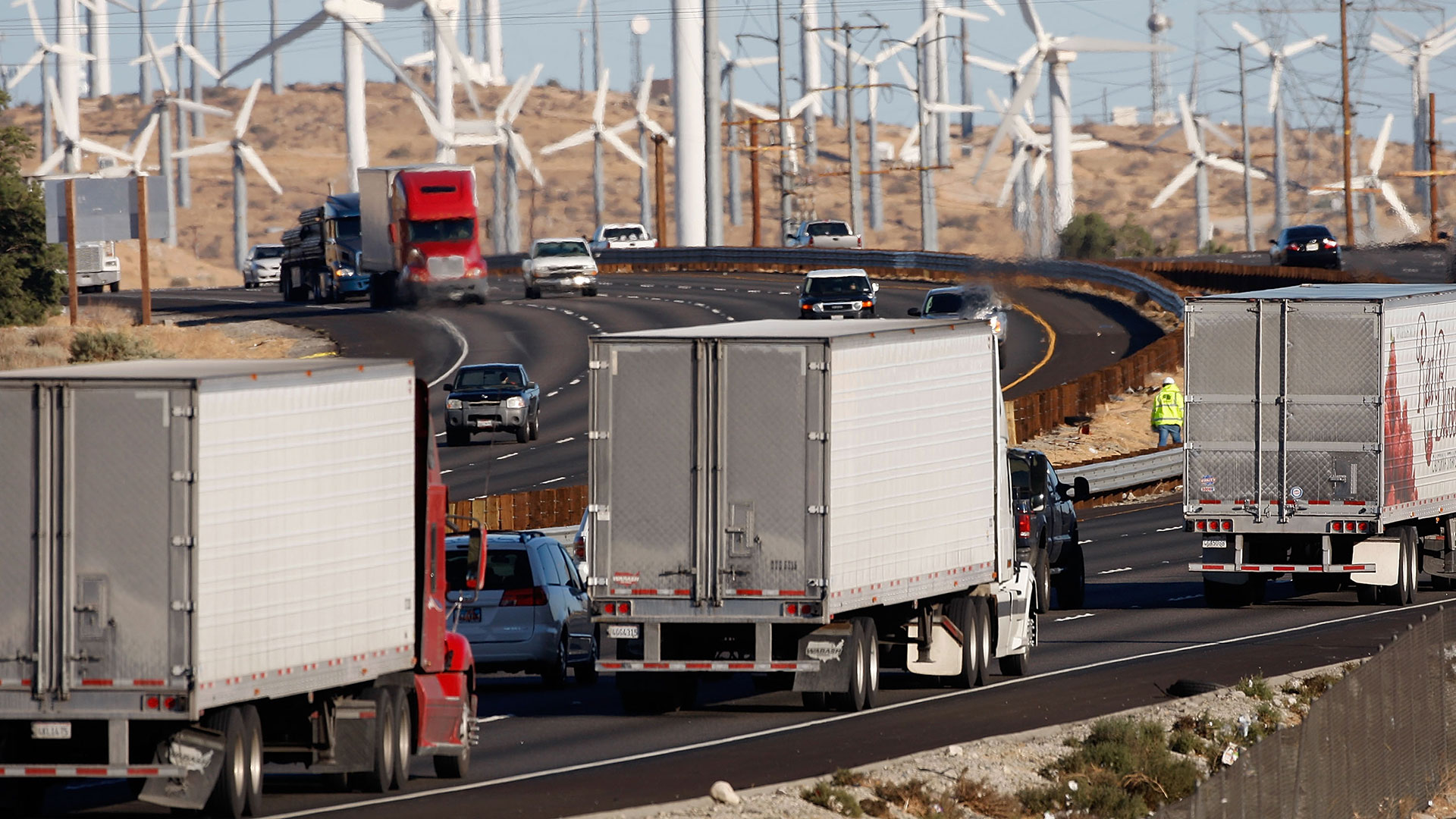

We may earn revenue from the products available on this page and participate in affiliate programs. Learn more ›
The U.S. government has started down a road that could lead to savings for truck drivers, cheaper cargo hauling, lower-cost retail products, and most importantly, a cleaner atmosphere. The Environmental Protection Agency’s new emissions standards for trucks is expected to slowly but surely help cut back on carbon pollution.
The agency’s new standards will work to lower carbon emissions by incrementally raising efficiency requirements over the next several years. The requirements will affect medium-and heavy-duty trucks such as semi-tractor-trailers sold in America, as well as heavy-duty vans pickups such as the Ford F-Series Super Duty. Heavy-duty trucks are an enormous source of pollutants and energy use, making up approximately 20 percent of oil usage and greenhouse gas emissions in the United States’s transportation sector, according to the EPA.
The EPA is aiming to lower medium and heavy-duty truck emissions by up to 25 percent by 2027, as well as increase heavy-duty pickup truck efficiency by 2.5 percent each year between 2021 and 2027. The government claims truck manufacturers are developing new technology that will allow them to meet the new fuel economy standards..
The agency also noted in a statement that the finalized restrictions will be confirmed in the real world with better testing processes that would make it harder for manufacturers to cheat emissions tests. Reports that a certain German automaker coughed awkwardly and stared at its feet upon hearing such remain unconfirmed.
The standards were agreed to after 400 meetings with various truck manufacturers, environmental groups, and lawmakers, Reuters reports. Originally, California officials pushed for the standards to come into effect in 2024, but 2027 wound up being the finalized goal.
The EPA claims that once everything falls into place regulation-wise and the new, cleaner trucks are filling up America’s highways, CO2 emissions will drop by 1.1 billion metric tons and the nation’s fleet of drivers will be saving around $170 billion in fuel costs. All told, the changes will reportedly yield a $230 billion savings across society—roughly eight times what it will cost to implement them.
